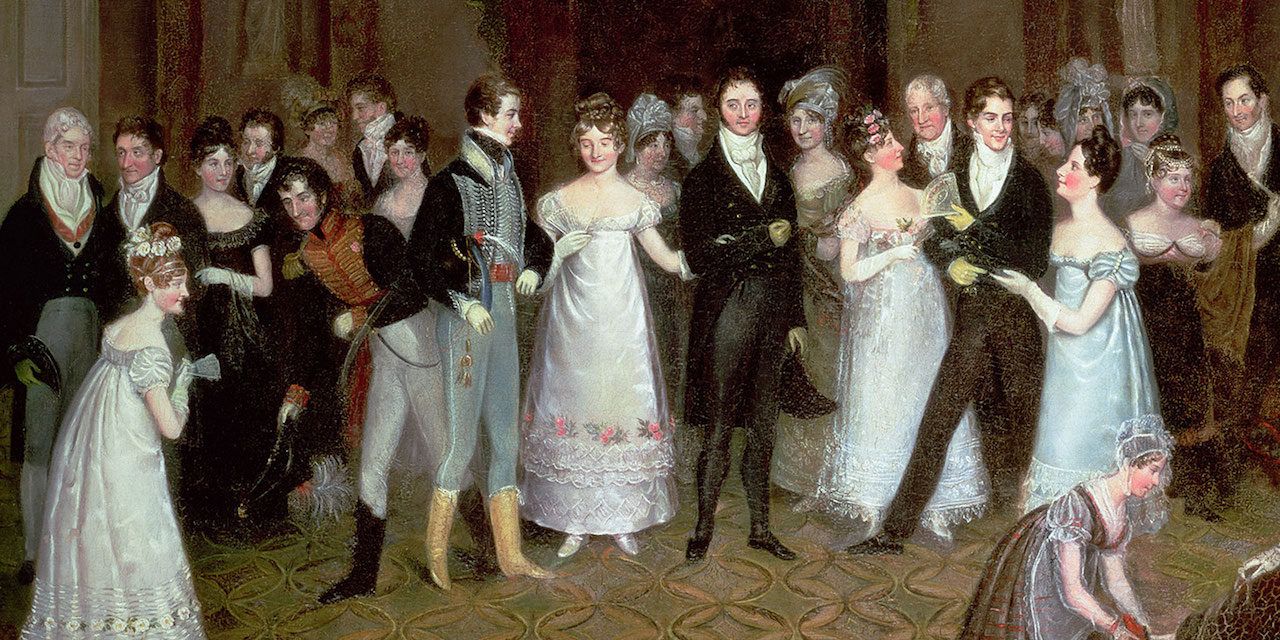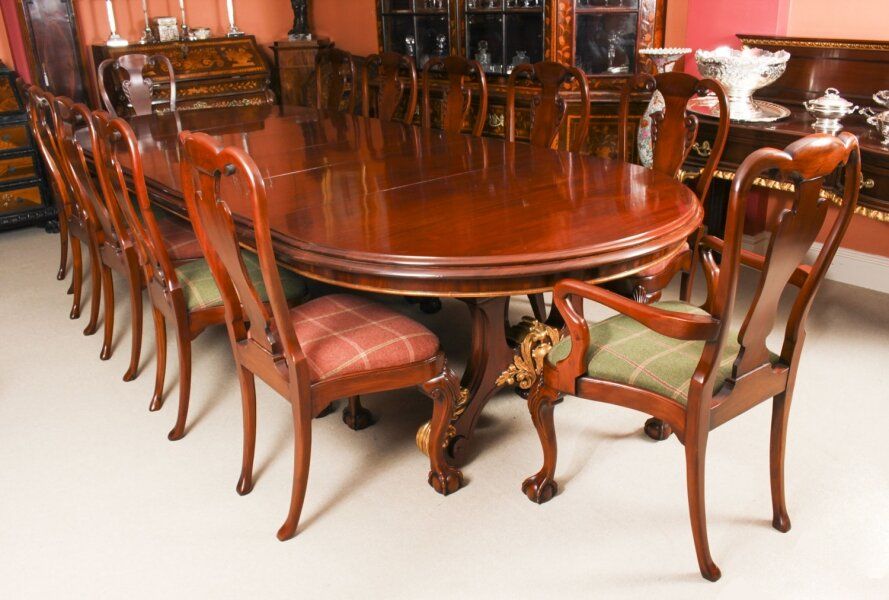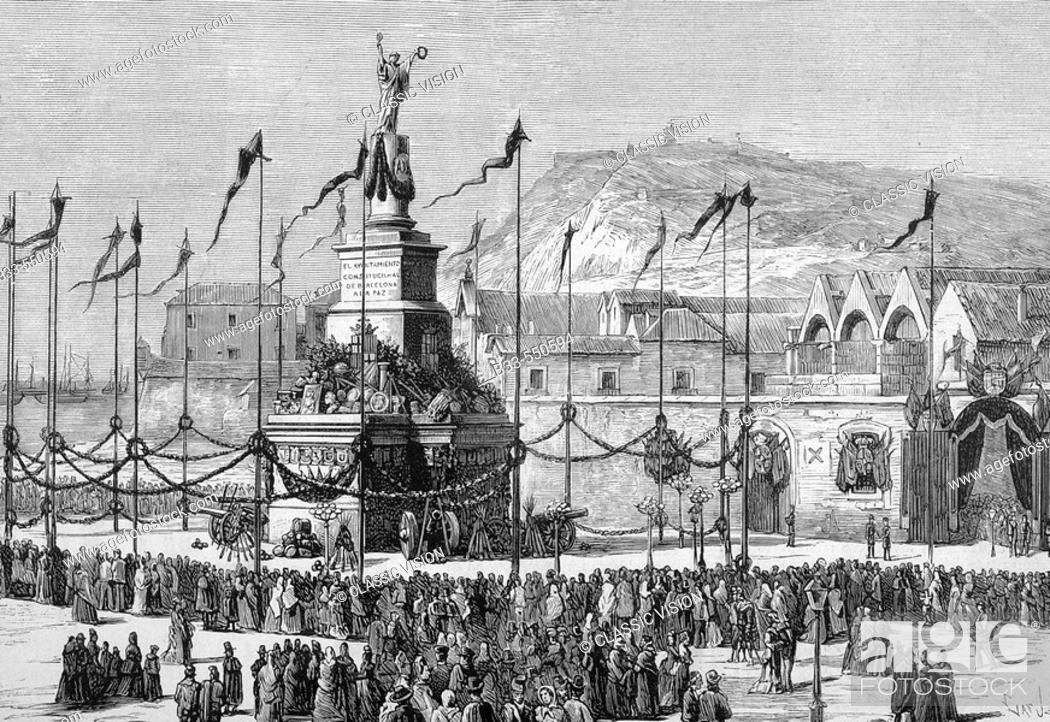Welcome to 19th Century, a blog dedicated to exploring the rich cultural heritage of the 1800s. In this article, we delve into the fascinating world of art history, specifically focusing on female representation. Join us as we unravel the stories behind influential women artists and examine their impact on this transformative era.
Breaking Barriers: Exploring Female Representation in 19th Century Art History
Breaking Barriers: Exploring Female Representation in 19th Century Art History sheds light on the pivotal role and challenges women faced in the art world during this period. The 19th century witnessed a significant shift in attitudes towards female artists, as well as the portrayal of women in art.
One notable barrier that women encountered was the restricted access to formal art education. In most cases, they were denied admission to prestigious art academies, limiting their opportunities for growth and recognition. However, despite these obstacles, numerous talented women defied societal norms and pursued their artistic passions.
Female representation in 19th century art encompassed various themes and styles. Women were often depicted as fragile and delicate beings, embodying ideal notions of femininity. Artists like Mary Cassatt challenged these conventional portrayals by highlighting the complexities of everyday life for women. Through her intimate depictions of mothers and children, Cassatt offered a fresh perspective and redefined the role of women in art.
Moreover, the suffrage movement during the late 19th century fueled a growing demand for more diverse representations of women. Female artists like Rosa Bonheur and Berthe Morisot emerged as pioneers, breaking through the barriers imposed by a male-dominated industry. Their works showcased women as strong and independent individuals, challenging traditional gender roles.
Social context played a crucial role in shaping art during this period. The rise of the Industrial Revolution and changing societal dynamics enabled women to engage with art in new ways. Art became a means of expressing their desires, frustrations, and aspirations in an ever-evolving world.
Exploring female representation in 19th century art history allows us to recognize the resilience and creativity of women who defied gender norms. They bravely broke barriers, carving out a space for themselves in the art world. Through their works, they challenged and redefined traditional notions of femininity, leaving a significant impact on the art of this era.
Introduction to Modern Art & Ideas
How Renaissance artists were trained
What is the representation of women in art?
In the 19th century, the representation of women in art underwent significant changes. Women were often portrayed in idealized and romanticized forms, emphasizing their beauty and femininity. Paintings frequently depicted women in traditional roles as nurturing mothers, graceful muses, or passive objects of desire.
However, there were also artists who challenged these stereotypes and presented alternative representations of women. The rise of feminism and changing societal attitudes towards women’s rights influenced the art world, leading to a more nuanced portrayal of women.
Some artists portrayed women engaged in intellectual pursuits, challenging the notion that their worth solely lay in their physical appearance. They depicted women reading, writing, or participating in scholarly discussions, highlighting their intelligence and agency. Artists like Rosa Bonheur and Berthe Morisot defied societal expectations by depicting women engaged in unconventional professions such as horse training and painting.
Additionally, there were artists who explored the realities of women’s lives, addressing social issues such as poverty, labor, and sexuality. For instance, the Pre-Raphaelite Brotherhood, a group of British artists, often portrayed working-class women in their art, shedding light on the struggles they faced.
Overall, the representation of women in 19th-century art was diverse, reflecting both traditional gender roles and the changing dynamics of society. While some artists perpetuated stereotypes and confined women to prescribed roles, others challenged these notions and presented women as strong, independent individuals with a wide range of experiences and abilities.
What was the 19th century concept of the New Woman?
In the context of the 19th century, the concept of the New Woman emerged as a social and cultural phenomenon. The New Woman referred to a shift in societal attitudes towards women and their role in society. She was seen as a departure from the traditional Victorian woman who was expected to be submissive, pure, and solely focused on domestic duties.
The New Woman challenged societal norms by asserting her desire for independence, education, and professional pursuits. She sought to break free from the constraints of marriage and motherhood, and instead, pursued careers, higher education, and involvement in public life.
Women’s suffrage movements gained momentum during this time, as many New Women fought for their right to vote and actively participated in political discussions. They aimed for gender equality and advocated for women’s rights in various aspects of life, including property ownership, divorce laws, and employment opportunities.
Literature and art played a significant role in popularizing the concept of the New Woman. Writers such as George Eliot and Charlotte Perkins Gilman portrayed strong, independent female characters who challenged gender stereotypes. Artists like Mary Cassatt depicted women engaged in non-traditional activities, breaking away from the conventional portrayals of femininity.
The New Woman also faced criticism and backlash from conservative societies who saw her as a threat to traditional gender roles and family values. She was often depicted as immoral, unnatural, or radical. Despite the opposition, the New Woman became an influential figure in shaping the future of women’s liberation and feminism.
Overall, the concept of the New Woman in the 19th century marked a significant shift in societal attitudes towards women. It represented a growing desire for women to challenge traditional gender roles, gain equal rights, and pursue personal fulfillment beyond the confines of the domestic sphere.
What were the women’s rights like during the 19th century?
During the 19th century, women’s rights were severely limited. Women were seen as inferior to men and were expected to fulfill traditional roles as wives and mothers. They had little to no control over their own lives, including limited access to education and restricted opportunities for employment.
In terms of political rights, women were excluded from participating in elections and holding public office. They were not allowed to vote or have a say in government affairs. This lack of political representation made it difficult for women to advocate for their own rights and interests.
In terms of property rights, women had very few legal protections. Upon marriage, a woman’s property and assets became her husband’s. Additionally, women had no right to inherit property or wealth, which further limited their financial independence.
The Seneca Falls Convention in 1848 marked a significant turning point in the fight for women’s rights. It was the first women’s rights convention held in the United States, where attendees discussed various issues facing women, including suffrage (the right to vote).
Throughout the 19th century, there were important voices advocating for women’s rights, such as Susan B. Anthony and Elizabeth Cady Stanton. These activists fought for gender equality, campaigning for women’s right to vote, improved education, and expanded employment opportunities.
Although progress was slow, by the end of the 19th century, some advancements were made. The suffrage movement gained momentum, and women began to gain more recognition for their contributions to society. However, true equality would not be achieved until the 20th century with the ratification of the 19th Amendment in 1920, granting women the right to vote in the United States.
In summary, women’s rights during the 19th century were severely limited, with women having little control over their own lives and lacking political and property rights. However, with the emergence of prominent activists and the suffrage movement, the groundwork for gender equality was laid for future generations.
What were the roles of men and women in the 19th century?
In the 19th century, the roles of men and women were largely defined by traditional gender norms and societal expectations.
Men: Men typically held positions of power and dominance in various aspects of life, including politics, business, and the public sphere. They were expected to be the breadwinners and providers for their families. Men had access to education and professional opportunities, which allowed them to pursue careers and establish themselves as leaders in their fields. They were commonly seen as the head of the household and were responsible for making important decisions.
Women: Women, on the other hand, were primarily expected to focus on domestic responsibilities and take care of the household and children. Their main role was to support their husbands and create a nurturing and harmonious home environment. Women were often denied access to formal education, limiting their opportunities for intellectual and professional advancement. They were expected to adhere to strict social rules and conventions, emphasizing qualities such as modesty, obedience, and piety.
However, it is essential to note that these roles were not universal or fixed. Different social classes and cultural backgrounds influenced the extent to which individuals could adhere to or challenge these expectations. Additionally, the 19th century saw the emergence of various movements advocating for women’s rights, such as the suffrage movement, which challenged and sought to redefine traditional gender roles.
The roles of men and women in the 19th century were largely shaped by traditional gender norms, with men assuming positions of power and women primarily focusing on domestic responsibilities. However, these roles were not absolute, and societal changes paved the way for challenges and redefinition of gender roles during this period.
Frequently Asked Questions
How were women represented in art during the 19th century, and what roles did they typically play?
During the 19th century, women were often portrayed in art as idealized figures, embodying traditional feminine virtues and roles. They were typically depicted as delicate, beautiful, and passive subjects, reflecting the prevailing societal norms of the time. Women were often shown in domestic settings, engaged in activities such as sewing, reading, or playing musical instruments, reinforcing their roles as caretakers and nurturers.
One prevalent theme in 19th-century art was the concept of the “angel in the house,” where women were depicted as angelic beings, providing emotional support and moral guidance to their families. These representations emphasized the idea of women as pure and virtuous, dedicated to their households and husbands.
However, there were also artists who challenged these traditional depictions, seeking to portray women in a more realistic and independent light. These artists often focused on female laborers or working-class women, shedding light on their struggles and their contributions to society. For example, the French painter Rosa Bonheur became well-known for her realistic portrayals of animals, challenging gender norms by dressing in traditionally masculine clothing to study and paint in male-dominated spaces.
Another significant development during the 19th century was the rise of the suffrage movement, which sought to secure voting rights for women. This movement influenced some artists to depict women as strong and determined individuals, fighting for their rights and demanding recognition as equals. These artworks aimed to challenge societal expectations and empower women to break free from their traditional roles.
Overall, while the representation of women in 19th-century art often reinforced traditional gender roles and ideals, there were also artists who began to challenge these conventions, highlighting the diversity of women’s experiences and advocating for greater gender equality.
What were the societal and cultural factors that influenced the representation of women in art during the 19th century?
During the 19th century, societal and cultural factors played a significant role in shaping the representation of women in art. One of the key influences was the prevailing conservative values and gender norms of the time. Women were expected to conform to traditional roles within the family and society, which often included being wives, mothers, and caretakers. This led to the portrayal of women in art primarily as passive figures, domesticated and confined to the private sphere.
Another important factor was the rise of the women’s rights movement and feminism during the 19th century. As women began advocating for equality and challenging their societal roles, artists also started to depict women in more progressive and empowering ways. This resulted in an emergence of artworks that portrayed women as independent, strong, and capable individuals.
Furthermore, the growth of the industrial revolution and urbanization impacted the representation of women in art. The changing economic landscape led to new opportunities for women outside of the home, such as factory work and other jobs. Artists began to capture these shifts by portraying women in various occupational roles, showcasing their contributions to society beyond traditional domesticity.
The influence of Romanticism and Realism also played a role in the representation of women in art during the 19th century. Romanticism emphasized emotions, passion, and idealized beauty, often portraying women as delicate, ethereal, and mysterious beings. On the other hand, Realism sought to depict the everyday lives of ordinary people, including women. This movement allowed for more realistic and nuanced representations of women, highlighting their struggles and experiences.
The representation of women in art during the 19th century was influenced by conservative gender norms, the women’s rights movement, industrialization, and artistic movements such as Romanticism and Realism. These factors shaped how women were portrayed, either as passive and confined to traditional roles or as strong, independent individuals breaking societal norms.
Who were some notable female artists in the 19th century, and how did they challenge traditional gender norms through their work?
In the 19th century, there were several notable female artists who challenged traditional gender norms through their work. Some of these artists include:
1. Mary Cassatt: A prominent American painter, Cassatt is known for her depictions of women and children. Through her work, she challenged the traditional male-dominated art world by focusing on domestic scenes and portraying the private lives of women and mothers.
2. Georgia O’Keeffe: O’Keeffe, an American modernist artist, challenged traditional gender roles by creating abstract and highly stylized paintings. Her bold and sensual flower paintings, as well as her landscapes, challenged the notion that women could only paint in a “feminine” or realistic style.
3. Rosa Bonheur: Bonheur, a French realist painter, defied traditional gender norms by pursuing a career as an animal painter. She gained recognition for her realistic and detailed portrayals of animals, often depicting them in action or in natural settings. Bonheur’s success challenged the belief that women were only capable of painting portraits or still lifes.
4. Berthe Morisot: Morisot was a leading French Impressionist painter, known for her intimate and domestic scenes. She challenged traditional gender norms by actively participating in the male-dominated art exhibitions of the time and being part of the Impressionist movement, which was revolutionary in its focus on capturing the fleeting effects of light and atmosphere.
These female artists challenged traditional gender norms through their choice of subject matter, style, and by actively participating in the art world that was predominantly male-dominated. They paved the way for future generations of women artists to have more opportunities and recognition in the art world.
The representation of women in art history during the 19th century is a complex and multifaceted topic. While progress was made in terms of the visibility of female artists and their inclusion in the art world, it is evident that significant challenges and biases persisted.
Throughout the century, prevailing societal norms and gender roles heavily influenced the depiction of women in art, often relegating them to passive and ornamental roles. However, opportunities for change arose as women artists began to challenge these conventions and push for their own artistic expression.
The rise of feminism and the fight for women’s rights also influenced the narratives and subjects explored by female artists. Many of them deliberately used art as a means of critiquing social and gender inequalities, shedding light on important issues such as the limited opportunities for women in education and professional spheres.
While female artists faced significant obstacles throughout the 19th century, it is important to acknowledge and celebrate the achievements and contributions made by those who defied societal expectations and established themselves as significant figures in art history. Their resilience and determination paved the way for future generations of female artists and continue to inspire ongoing efforts for greater gender equality in the art world.
As we reflect on female representation in 19th-century art history, it is crucial to continue reevaluating and challenging the narratives that have marginalized and excluded women. By actively seeking out and promoting the work of overlooked female artists from this period, we can ensure a more comprehensive understanding of the artistic and cultural landscape of the time.
In this quest for a more inclusive art history, it is imperative to provide platforms, opportunities, and support for contemporary female artists. By doing so, we can rectify historical imbalances and foster a more equitable and diverse art world for future generations.
In conclusion, female representation in 19th-century art history is a testament to the struggles, resilience, and triumphs of women during this period. Through continued efforts to challenge, question, and rewrite these narratives, we can create a more accurate and inclusive record of the contributions and impact of women in the arts.






